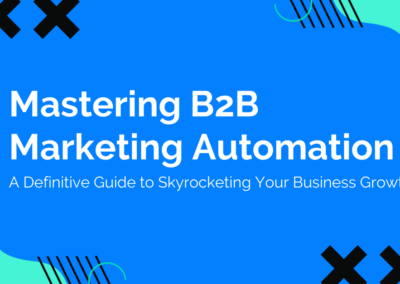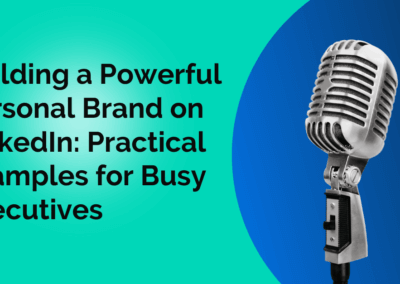The concept of lead nurturing is marketing 101. Whether you’re part of a SaaS or Management Consultant company, the objective is always to move prospects through the sales funnel. As we discussed in our blog post, The Impact of Demand Generation on Sales Cycles, demand generation strategy is all the activities that bring attention to your company in an effort to bring prospects into your sales funnel. Closing a deal isn’t a one-size-fits-all situation, so the way you nurture your buyers plays a huge role in your strategy’s success.
Drip campaigns are probably the most popular method of lead nurturing. Typically in the form of emails, drip campaigns are automated and are sent to your leads regularly in an effort to stay at the top of their minds. While this such a popular method of lead nurturing for a reason (it’s pretty darn easy) there are a few drawbacks that should keep you from relying too heavily on them.
If your emails are overly promotional, without actually offering anything of value, not only will your leads stop moving through your funnel, but they’ll probably unsubscribe. Think about how many times you’ve opened your inbox and seen yet another sales email from a store you’ve only casually shopped at. No coupons, nothing of value — did you scroll to the bottom and unsubscribe? Or better yet, check your spam folder and see how many marketers your email provider already made that call for you about.
Luckily, there are many more effective ways to nurture your leads.
1) Make it personal
While you don’t have to personally write a tailored email to each of your leads, a little bit of personalization can go a long way. At the very least, it’s helpful to choose an email template in your CRM that allows you to include your recipient’s name. That’s not all you can do, though.
The great thing about paying such close attention to your demand generation strategy is that you likely have a general idea of specifically how you can be of service to each of your leads. If you’ve identified potential client’s pain points, don’t hesitate to make them known in your lead nurturing efforts. Nobody likes to feel like a number, so if you’re reaching out and expecting them to open your emails, make sure what you have to say to them is relevant. While you might think this seems like a wasted effort, HubSpot, found that leads nurtured with targeted content produce an increase in sales opportunities of more than 20%. There are plenty of segmentation options in all of the main CRM systems that you don’t have to cast such a wide net.
2) Use more than one medium
Sure, email is most common and it’s certainly a medium to make sure you pay attention. However, it’s not the be-all, end-all to lead nurturing. Honestly, even though content marketing has become associated with digital marketing, the internet itself isn’t even the limit when it comes to nurturing your leads.
In addition to mail, both e- and direct, you can use social media, blogs, webinars, and videos to help move your leads along their buyer’s journey. Be active and engaging on your social channels, keeping in mind that while it might feel mundane to devote time and energy to your Twitter presence, this is a common way that leads might actually discover your brand and product. You can also look into targeted ads or initiate connections with leads on social media yourself. This also gives your brand a personal edge that can help you build relationships.
3) Check your stats
Your lead nurturing efforts are only worth it if they’re actually doing something for your demand generation strategy. Sure, you can automate some emails and tweet some Tweets, but if you’re not checking in on how effective these things are, you’re probably wasting your time. If you’re finding that only 5% of email recipients are actually opening your messages, it’s time to re-evaluate your strategy.
Very few people get their audience’s needs right on the first try, so there’s no shame in starting over. Play with different subject lines, put more of an emphasis on personalization and see what makes a difference in your engagement levels.

4) Retargeting
How many times have you taken the plunge from a casual browser to a full-blown customer in a single website visit? You can probably count those instances on one hand. Impulse shopping isn’t as common online as it is in person when you can think about a product revisit a website at any time. Of course, it helps push you along when you happen to come across an ad for exactly what you were looking at the next time you’re on your phone. Sorcery? Mindreading? Nah, just retargeting.
Retargeting is a form of paid advertising that puts your brand in front of bounced traffic even after the person has left your website. This is a great way to keep yourself at the forefront of leads’ minds, without actually having to do anything yourself — not because you don’t want to put more effort in, you’re just too busy with personalizing your campaigns, obviously.
5) Follow up
We all know how frustrating it is to continuously have to press certain numbers on our phones when all we really want to do is talk to a human who can help us with our problem. What a relief it is when you finally get to talk to someone. Be that relief for your leads.
When your potential customers are nearing the end of their buyer’s journey, engaging with your emails, taking an interest in what you have to offer, don’t make them reach out to you. Nudge them along with a human contact. Of course, this will usually be over the phone or via a personal email, but Databox suggests attempting to actually meet with potential leads in person when it’s possible.
“Technology helps advance the conversation, but it will never replace those human interactions that build trust over time.”




